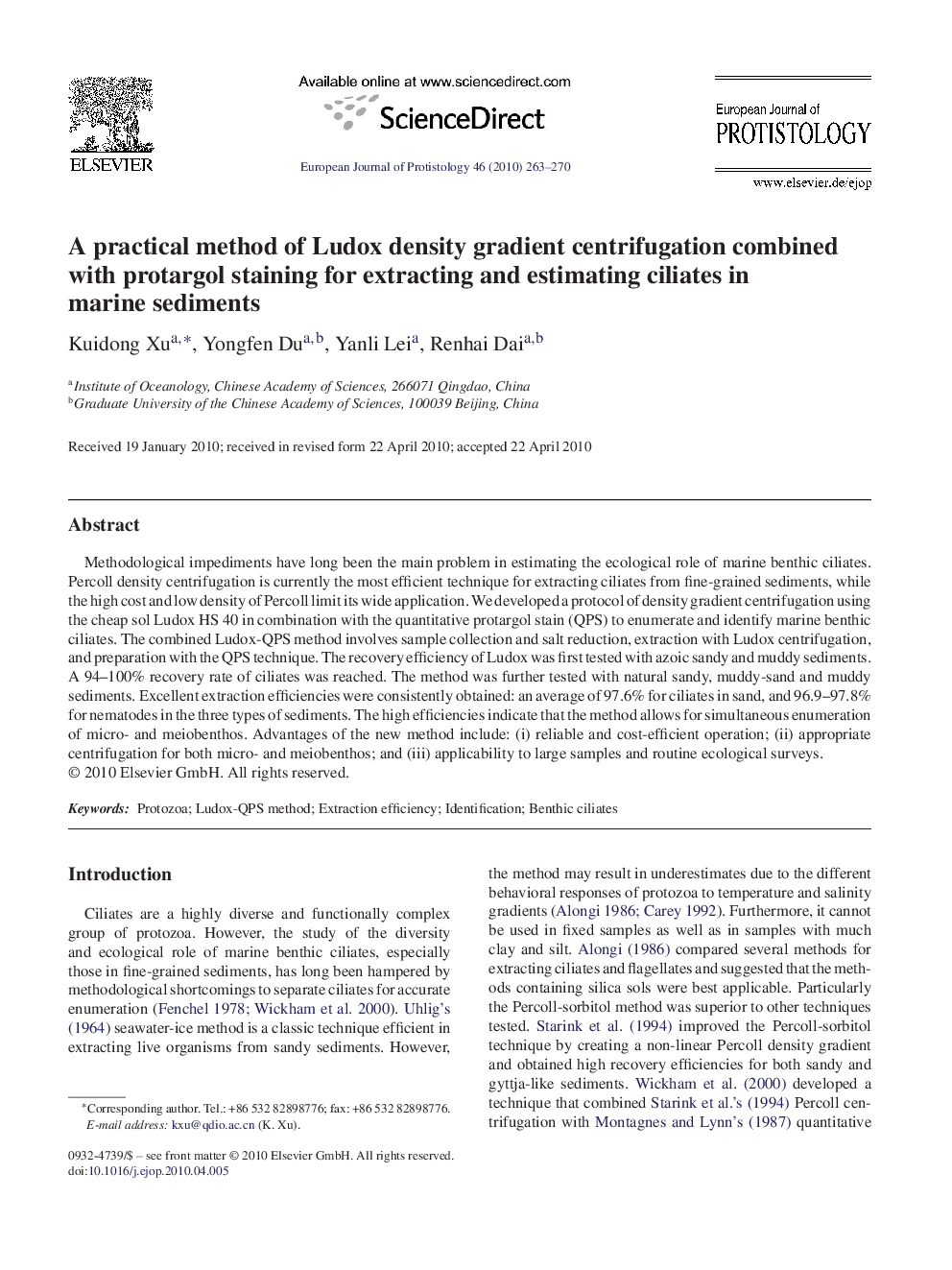| Article ID | Journal | Published Year | Pages | File Type |
|---|---|---|---|---|
| 2047230 | European Journal of Protistology | 2010 | 8 Pages |
Methodological impediments have long been the main problem in estimating the ecological role of marine benthic ciliates. Percoll density centrifugation is currently the most efficient technique for extracting ciliates from fine-grained sediments, while the high cost and low density of Percoll limit its wide application. We developed a protocol of density gradient centrifugation using the cheap sol Ludox HS 40 in combination with the quantitative protargol stain (QPS) to enumerate and identify marine benthic ciliates. The combined Ludox-QPS method involves sample collection and salt reduction, extraction with Ludox centrifugation, and preparation with the QPS technique. The recovery efficiency of Ludox was first tested with azoic sandy and muddy sediments. A 94–100% recovery rate of ciliates was reached. The method was further tested with natural sandy, muddy-sand and muddy sediments. Excellent extraction efficiencies were consistently obtained: an average of 97.6% for ciliates in sand, and 96.9–97.8% for nematodes in the three types of sediments. The high efficiencies indicate that the method allows for simultaneous enumeration of micro- and meiobenthos. Advantages of the new method include: (i) reliable and cost-efficient operation; (ii) appropriate centrifugation for both micro- and meiobenthos; and (iii) applicability to large samples and routine ecological surveys.
